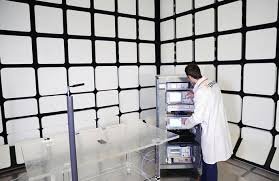Introduction
In today’s digitally connected world, nearly every electronic device that emits radiofrequency (RF) energy—from smartphones to microwaves—must meet strict regulatory standards. One of the most important in the United States is FCC Compliance Testing, a critical step to ensure products are safe, don’t interfere with other devices, and are legal to sell.
This article breaks down what FCC compliance testing is, why it matters, and how manufacturers can navigate the certification process efficiently.
What is FCC Compliance Testing?
FCC Compliance Testing refers to a series of evaluations required by the Federal Communications Commission (FCC) to ensure that electronic and RF devices meet regulatory limits for electromagnetic interference (EMI) and radio frequency interference (RFI).
The FCC’s rules are codified in Title 47 of the Code of Federal Regulations (CFR), particularly Part 15, which governs unlicensed RF devices.
Key Goals of FCC Testing:
- Ensure devices do not interfere with licensed communications (e.g., emergency services, aviation).
- Limit emissions of unintentional RF energy.
- Promote electromagnetic compatibility (EMC) among devices.
Who Needs FCC Compliance Testing?
FCC testing is required for manufacturers, importers, and distributors of:
- Consumer electronics (phones, laptops, TVs)
- Wireless devices (Bluetooth, Wi-Fi, Zigbee)
- Industrial, scientific, and medical equipment (ISM devices)
- IoT devices and smart home products
- LED lighting and switching power supplies
If your product emits RF energy or connects wirelessly in the U.S., FCC testing is not optional.
Types of FCC Approvals
The FCC offers three main compliance paths depending on the product type:
1. Supplier’s Declaration of Conformity (SDoC)
- Used for non-intentional radiators (e.g., digital devices without a wireless transmitter).
- Requires testing by an accredited lab but no FCC filing.
- Manufacturer keeps records and labels device with FCC compliance statement.
2. Certification
- Required for intentional radiators (e.g., devices with Wi-Fi, Bluetooth).
- Involves testing at an FCC-recognized Telecommunication Certification Body (TCB).
- Requires filing documentation, test results, and technical specs with the FCC.
- Product is issued an FCC ID number.
3. Verification (Phased Out)
- This path was merged with SDoC in 2017.
FCC Testing Process: Step-by-Step
1. Product Assessment
Determine whether your device is an intentional or unintentional radiator. This guides the appropriate compliance path.
2. Pre-Compliance Testing
Run initial tests to identify and resolve potential emission issues early in the design stage.
3. Choose a Test Lab
Use an FCC-accredited lab, especially for certification. Labs test for:
- Radiated and conducted emissions
- Bandwidth and frequency accuracy
- Power output and spurious emissions
4. Prepare Documentation
Includes:
- Block diagrams
- Circuit schematics
- User manuals
- Operational descriptions
- Test reports
5. Submit for Certification (if needed)
If under the Certification route, submit all data to a TCB. The TCB will review, issue an FCC ID, and list the product on the FCC database.
6. Labeling and Compliance Statement
Products must have:
- FCC ID (for certified devices)
- Compliance statement (for SDoC)
- Instructions regarding interference
Common Pitfalls to Avoid
- Skipping pre-compliance testing can delay time-to-market due to late-stage redesigns.
- Using uncertified modules (e.g., Wi-Fi or Bluetooth) can void prior certifications.
- Improper labeling or missing user notices may result in fines or recalls.
- Lack of documentation during audits can lead to enforcement actions.
Penalties for Non-Compliance
The FCC enforces strict penalties for non-compliance, including:
- Fines up to $147,000 per violation per day
- Product recalls or import bans
- Cease-and-desist orders
- Brand reputation damage
Benefits of Compliance
- Legal Market Access: Required for selling in the U.S. market.
- Reduced Liability: Ensures product safety and reliability.
- Consumer Trust: Demonstrates commitment to quality and standards.
- Global Gateway: FCC compliance is often a stepping stone to international certifications (e.g., CE, IC, MIC).
Conclusion
FCC compliance testing is not just a legal checkbox—it’s a vital step in responsible product development and market readiness. By understanding the process and working with qualified labs and consultants, manufacturers can bring products to market faster, safer, and in full regulatory alignment.
Whether you’re launching a new smart device or retrofitting an old design, compliance starts at the design table—and ends with a confident, certified product.


